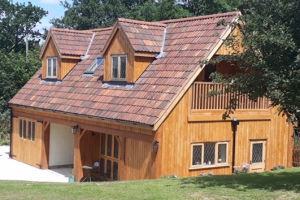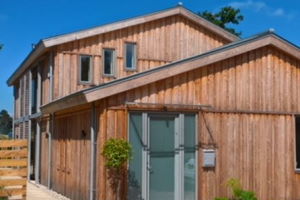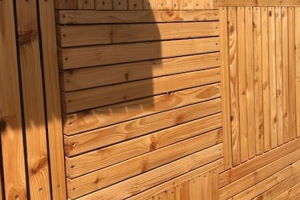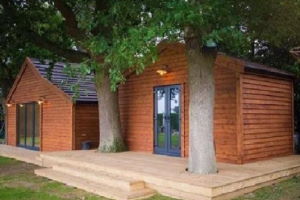








 We specialise in producing Cladding - Flooring & Fencing in a number of different types of timber to suite your budget and taste. Rustic or contemporary Co2 Timber® can help. Our experienced team is always on hand to offer guidance on all aspects of the products we produce.
We specialise in producing Cladding - Flooring & Fencing in a number of different types of timber to suite your budget and taste. Rustic or contemporary Co2 Timber® can help. Our experienced team is always on hand to offer guidance on all aspects of the products we produce. We pride Ourselves in the quality and customer service we provide. If you are concerned about your carbon footprint/sustainability and the affects you are having on our planet Co2 Timber® are the company to choose.
We pride Ourselves in the quality and customer service we provide. If you are concerned about your carbon footprint/sustainability and the affects you are having on our planet Co2 Timber® are the company to choose.
Speaking with our customers is an important part of the service we provide along with useful tools such as our quantity calculators.
 All the timber we supply has a low carbon footprint without compromising the quality of the timber. We aim to keep our carbon footprint and that of the products we produce to a minimum and encourage sustainable practices.
All the timber we supply has a low carbon footprint without compromising the quality of the timber. We aim to keep our carbon footprint and that of the products we produce to a minimum and encourage sustainable practices.
We supply to Trade, DIY's, Contractors, Builders, Manufactures, Architects.
 Please see our Customers Projects for examples of the products we supply.
Please see our Customers Projects for examples of the products we supply.
We Delivery Nationwide – International Deliveries Also Available.
If any question please visit our contact us.
To simplify the differences -
British Western Red cedar is generally a consistent honey brown colour but can have tones of red, pink, and dark colours quite often on the same length of timber, it is relatively knotty, perfect for a more rustic "Country" look. Canadian Cedar however has a wide range of colours from cream through to red and oak, often on the same length of timber, it has very few knots and lends itself to a more contemporary "Modern" look. Both are suitable for internal or external use.
Canadian and British Cedar can be left untreated and both will "silver/grey" unless a UV oil is applied, please see www.co2cedar.co.uk for Canadian Cedar and for British Cedar please see www.co2timber.co.uk.
Both these timbers are "good to work" i.e., they both machine well and are nice to work with. It is really about the look you want to achieve which normally dictates which type of cedar to use. Both of the Cedars are FSC, PEFC certified (Canadian).
Suitable for many situations where you might use Oak but at a considerable lower price. Larch like Douglas Fir is a good all-rounder. Good for profile cladding (externally and internally), decking, flooring, joinery, furniture work. British Larch is home grown (UK) and traditionally has more live knots than imported larch. The knots adds to its character. Alpine Austrian is grown in Austrian as has less live knots than British but still has a higner knot count that Siberian Larch.
Both are fairly straight-grained with strong and clear annual growth rings. The timber has a warm, pale orangey colour, sometimes going into a pale pinkish red. The heartwood is pale reddish-brown to brick-red in colour, sharply distinct from the narrow, lighter coloured sapwood.
Suitable for a traditional or contemporary look, larch cladding can provide a durable and attractive solution. Alpine Austrian Larch has a Class 3 - Moderately Durability, British Larch has a Class 4 Slightly Durability.
Red Grandis is a versatile, fast-growing hardwood. Its colour has variations ranging from pale pink to deep red. A good choice for a clean contemporary "Modern" look.
It lends itself well to both internal and external projects such as Flooring, Decking, Cladding and Fencing.
Red Grandis is plantation-grown in areas of Uruguay.
Make sure all end grain is sealed with a suitable end grain sealer (see our accessories page). The end grain absorbs vastly more moisture than any other surface and therefore must be protected. It is advisable to apply a good quality oil/paint timber treatment suitable for the type of timber being used to all surfaces coloured or clear, this will help to minimise any water ingress and excessive contraction/expansion after installation (See our accessories page).
This is a great timber not only for external cladding and landscaping project such as decking but is easily hard enough for flooring.
Balau is a very hard timber with smooth fine grain and has very few knots. Mainly associated with decking but is also a very worthy timber cladding, fencing & flooring.
FSC, SVLK (Indonesia’s Timber Legality Assurance), FLEGT (a Organisation to combat illegal logging) compliant.
Both can be left untreated and like all timber will “silver/grey” unless a UV oil is applied.
They lends themselves to both internal and external projects such as Flooring, Decking, Cladding and Fencing.
Suitable for external and internal cladding projects.
Durability is the ability of a species to resist decay either naturally or through preservatives. The Class is based on the ability of the heartwood (inner part of the tree) to resist fungal decay. The sapwood (the living outermost portion of the tree)is considered not durable and should not be used for external projects without preservative.
BS EN 350 has 5 classes of durability they are:-
Class 1 to 3 can be left as untreated timber, a natural ageing process will accrue e.g. Cedar will turn a grey colour. Class 4 and 5 will need to be treated with preservatives.
For further information see www.greenspec.co.uk/building-design/cladding-durability-quality